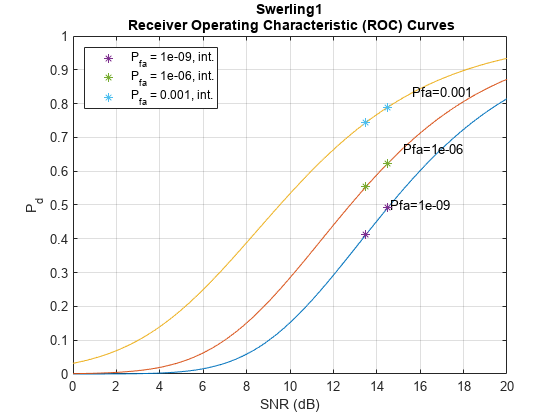rocinterp
Syntax
Description
ipd = rocinterp(snr,pd,snrq,'snr-pd')pd is a matrix, the function interpolates each column
independently. In this and the next syntax, rocinterp performs
linear interpolation after transforming the
Pd-axis of the ROC curve using the normal
probability scale.
ipd = rocinterp(pfa,pd,pfaq,'pfa-pd')pd is
a matrix, the function interpolates each column independently. In this and the next
syntax, rocinterp performs linear interpolation after transforming
both axes of the ROC curve using a logarithmic scale.
Examples
Input Arguments
Output Arguments
Extended Capabilities
Version History
Introduced in R2021a
